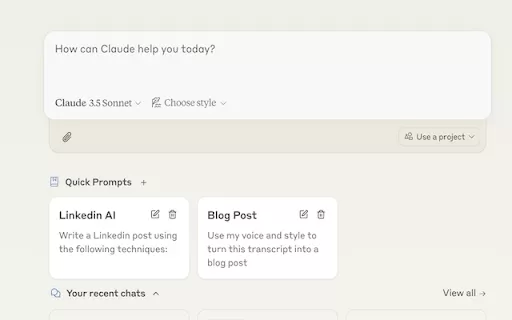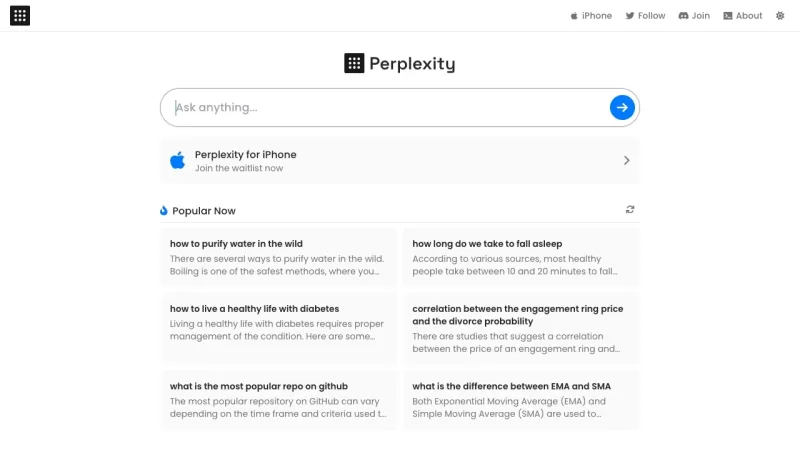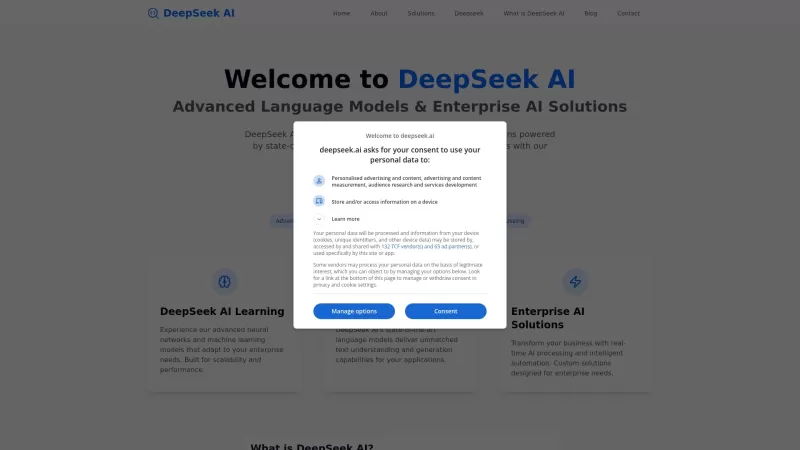Future-Proof Your UX Career: Essential Skills for Success in 2025

 April 25, 2025
April 25, 2025

 FrankSmith
FrankSmith

 8
8
In the ever-changing world of UX and product design, it's clear that the field isn't dying—it's transforming. To stay ahead, designers must focus on key growth areas to remain competitive. As AI and automation reshape how we design, it's essential to evolve from just being creators to becoming curators and strategic thinkers. This article dives into how you can future-proof your career by honing crucial UX skills.
Key Points
- The UX/Product Design field is evolving, not dying.
- It's crucial for designers to focus on key areas of growth.
- AI and automation are changing the design process.
- Designers must shift from makers to curators and strategic thinkers.
- Understanding business and product fundamentals is essential.
- Systems thinking is critical for strategic contribution.
- Advocating for inclusivity in design is becoming vital.
Evolving Role of the UX Designer: Maker to Curator
The Shift from Maker to Curator

The world of UX and product design is buzzing with change. AI and automation aren't just buzzwords anymore; they're reshaping our industry. The traditional view of designers as mere 'makers'—those who craft interfaces and interactions—is shifting. Now, we're seeing designers step into the role of 'curators', guiding the design process to ensure quality, alignment, and impactful user experiences.
This evolution isn't about making designers obsolete. It's about raising their strategic importance. As AI takes care of the more routine design tasks, designers can zoom out to focus on the bigger picture: understanding user needs, shaping product strategy, and ensuring alignment with business goals. This shift demands a deeper grasp of business fundamentals and product strategy, allowing designers to play a pivotal role in steering product development.
Key Takeaways:
- Understand how AI tools automate basic design tasks.
- Focus on user needs, product vision, and business alignment.
- Develop knowledge of business and product strategy.
The rise of AI opens up exciting possibilities for designers. It can automate repetitive tasks, generate design variations, and personalize user experiences. However, AI can't replicate the critical thinking, empathy, and ethical considerations that are crucial for responsible design. Designers must use AI as a tool to enhance their work, not replace it. This means sharpening skills in prompt engineering, data analysis, and human-centered design to ensure AI-powered solutions are effective, ethical, and aligned with user needs.
To thrive in this new landscape, designers need to embrace lifelong learning, staying on top of new technologies, experimenting with different design approaches, and collaborating with other fields like engineering, marketing, and sales. By embracing this change, designers can remain relevant and valuable in the ever-evolving world of UX and product design.
Mastering the Fundamentals of Design

Even as AI's influence grows, a solid understanding of design fundamentals is more crucial than ever. With AI generating content, designers must be able to distinguish between good and bad design, especially when it comes to AI outputs. A deep understanding of UX principles, visual design, interaction design, and information architecture is essential for creating user-centered products that truly work.
Why are design fundamentals more important than ever?
- Quality Control: AI can generate variations, but designers must ensure they meet high UX standards.
- Ethical Considerations: Design fundamentals guide ethical design practices, ensuring fairness and accessibility.
- Strategic Implementation: Understanding design principles is key to using AI tools effectively.
To solidify your understanding of design principles, consider these resources:
- The Design of Everyday Things by Don Norman: A classic exploration of usability and user-centered design.
- Universal Principles of Design by William Lidwell, Kritina Holden, and Jill Butler: A comprehensive overview of design principles from various disciplines.
- Refactoring UI by Adam Wathan and Steve Schoger: A practical guide to improving user interfaces with design principles.
These resources lay a strong foundation for understanding design principles and applying them effectively in your work. By mastering these fundamentals, you can create high-quality, user-centered designs that meet your users' needs and achieve your business goals.
Understanding Business and Product Strategy
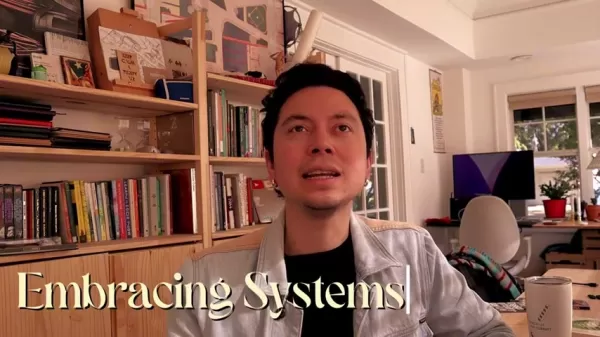
To truly contribute strategically, designers must understand the fundamentals of business and product strategy. It's about seeing how your work impacts the bottom line, aligns with market trends, and contributes to the overall success of the product. This means going beyond aesthetics and usability to consider factors like revenue generation, customer acquisition, and competitive differentiation.
How can designers develop business acumen?
- Take business courses: Online courses and workshops can provide a foundation in business principles.
- Collaborate with stakeholders: Work closely with product managers, marketers, and sales teams to understand their perspectives.
- Analyze market trends: Stay informed about industry trends and competitor activities.
- Track key metrics: Monitor how design decisions impact key performance indicators (KPIs).
By developing a strong understanding of business and product strategy, designers can become valuable partners in the product development process, contributing not just to the look and feel of a product, but also to its overall success.
Implications of Radical Technologies
Theoretical Frameworks for Future Technologies

To deepen your understanding of the broader implications of these technologies, dive into Radical Technologies: The Design of Everyday Life by Adam Greenfield. The chapter on artificial intelligence, in particular, offers valuable insights. This book will help you think critically about how technology shapes our lives and influences how we design products.
Radical Technologies encourages designers to look beyond the immediate functionality of products and consider their broader societal and ethical implications. This includes questions of privacy, bias, and the potential for misuse. By engaging with these questions, designers can become more responsible and ethical in their work, ensuring that technology is used to create positive impact.
The book covers a wide range of technologies, from smartphones and social media to artificial intelligence and blockchain, examining their impact on urban spaces, social interactions, and political power. It challenges designers to think critically about the role of technology in shaping our world and to consider the ethical implications of their work.
Key concepts explored in Radical Technologies:
- Privacy and Surveillance: How technology enables new forms of surveillance and data collection.
- Algorithmic Bias: How algorithms can perpetuate and amplify existing social inequalities.
- The Future of Work: How automation and AI are changing the nature of work.
- Urban Design: How technology is transforming urban spaces and creating new challenges for urban planning.
By delving into these topics, designers can broaden their perspective and develop a more nuanced understanding of the complex relationship between technology and society.
Pros and Cons of Systems Thinking in Design
Pros
- Holistic solutions
- Improved strategic alignment
- Better problem-solving
- Enhanced user experience
Cons
- Complexity
- Time-consuming
- Requires broader knowledge
- Potential for analysis paralysis
How to Embrace Systems Thinking in UX Design
Key Applications of Systems Thinking for UX Designers
As UX designers aim to contribute more strategically, systems thinking becomes invaluable. But what exactly is systems thinking, and how does it differ from design systems? Systems thinking is about understanding how different elements within a system are interconnected and how changes in one area can affect the whole. It's about seeing the bigger picture and recognizing the complex relationships within a product or service. It's not the same as design systems.
By adopting a systems thinking approach, UX designers can:
- Improve product strategy: Understand how the product fits into the broader ecosystem and identify opportunities for innovation.
- Design more cohesive experiences: Create seamless user journeys that span multiple touchpoints.
- Solve complex problems: Address root causes rather than just treating symptoms.
Let's explore some examples:
- Scenario: Designing an e-commerce platform.
- Traditional Approach: Focus solely on optimizing the checkout flow or improving product search.
- Systems Thinking Approach: Consider the entire customer journey, including marketing, customer service, shipping, and returns. Identify how each touchpoint impacts the overall customer experience and design solutions that address the needs of the whole system.
- Scenario: Developing a mobile banking app.
- Traditional Approach: Focus on creating a visually appealing and user-friendly interface.
- Systems Thinking Approach: Consider the broader financial ecosystem, including ATMs, online banking, and customer service channels. Design an app that integrates seamlessly with these other touchpoints and provides a consistent and convenient experience for users.
By embracing systems thinking, UX designers can move beyond isolated design decisions and create holistic solutions that address the needs of the entire system.
FAQ
Is UX design a good career in 2025?
Yes, UX design remains a promising career path in 2025. While the field is evolving, the demand for skilled UX designers who can understand user needs, solve complex problems, and contribute strategically to product development continues to grow. By focusing on key growth areas such as AI, systems thinking, and inclusivity, you can future-proof your career and stay ahead in the job market.
What are the key skills for UX designers in 2025?
The key skills for UX designers in 2025 include a strong understanding of design fundamentals, business acumen, systems thinking, AI and automation, and inclusive design practices. Developing these skills will enable you to contribute meaningfully to product development and create impactful user experiences.
Related Questions
How can I stay updated on the latest UX design trends and technologies?
Staying updated requires continuous learning and engagement with the design community. Follow leading design blogs, attend conferences and webinars, participate in online forums, and experiment with new tools and techniques. Networking with other designers and seeking mentorship can also provide valuable insights. Consider subscribing to industry newsletters and setting up Google Alerts for relevant keywords to stay informed about the latest developments.
Related article
 PixVerse AI Video Generator: Unleash Your Creative Potential
In today's fast-paced digital world, video content has taken the throne. Whether you're a seasoned marketer, an aspiring content creator, or just someone eager to share a story, the ability to craft high-quality videos is invaluable. That's where PixVerse AI steps in, offering a revolutionary platfo
PixVerse AI Video Generator: Unleash Your Creative Potential
In today's fast-paced digital world, video content has taken the throne. Whether you're a seasoned marketer, an aspiring content creator, or just someone eager to share a story, the ability to craft high-quality videos is invaluable. That's where PixVerse AI steps in, offering a revolutionary platfo
 Boost Your Earnings: Provide Travel Planning Services on Fiverr
Do you find joy in exploring new destinations and meticulously crafting travel itineraries? Why not transform that passion into a profitable venture by offering travel planning services on Fiverr? It's no secret that many people crave the excitement of travel but often find themselves short on time
Boost Your Earnings: Provide Travel Planning Services on Fiverr
Do you find joy in exploring new destinations and meticulously crafting travel itineraries? Why not transform that passion into a profitable venture by offering travel planning services on Fiverr? It's no secret that many people crave the excitement of travel but often find themselves short on time
 Diving Deep into Hollow Sky's Dreamy Soundscapes: An Exploration
Discovering the Essence of Hollow Sky: A Musical JourneyHollow Sky isn't just another name in the music scene; it's an immersive experience that captivates listeners. With its haunting melodies intertwined with deeply introspective lyrics, Hollow Sky crafts an environment where fans can truly lose t
Comments (0)
0/200
Diving Deep into Hollow Sky's Dreamy Soundscapes: An Exploration
Discovering the Essence of Hollow Sky: A Musical JourneyHollow Sky isn't just another name in the music scene; it's an immersive experience that captivates listeners. With its haunting melodies intertwined with deeply introspective lyrics, Hollow Sky crafts an environment where fans can truly lose t
Comments (0)
0/200

 April 25, 2025
April 25, 2025

 FrankSmith
FrankSmith

 8
8
In the ever-changing world of UX and product design, it's clear that the field isn't dying—it's transforming. To stay ahead, designers must focus on key growth areas to remain competitive. As AI and automation reshape how we design, it's essential to evolve from just being creators to becoming curators and strategic thinkers. This article dives into how you can future-proof your career by honing crucial UX skills.
Key Points
- The UX/Product Design field is evolving, not dying.
- It's crucial for designers to focus on key areas of growth.
- AI and automation are changing the design process.
- Designers must shift from makers to curators and strategic thinkers.
- Understanding business and product fundamentals is essential.
- Systems thinking is critical for strategic contribution.
- Advocating for inclusivity in design is becoming vital.
Evolving Role of the UX Designer: Maker to Curator
The Shift from Maker to Curator

The world of UX and product design is buzzing with change. AI and automation aren't just buzzwords anymore; they're reshaping our industry. The traditional view of designers as mere 'makers'—those who craft interfaces and interactions—is shifting. Now, we're seeing designers step into the role of 'curators', guiding the design process to ensure quality, alignment, and impactful user experiences.
This evolution isn't about making designers obsolete. It's about raising their strategic importance. As AI takes care of the more routine design tasks, designers can zoom out to focus on the bigger picture: understanding user needs, shaping product strategy, and ensuring alignment with business goals. This shift demands a deeper grasp of business fundamentals and product strategy, allowing designers to play a pivotal role in steering product development.
Key Takeaways:
- Understand how AI tools automate basic design tasks.
- Focus on user needs, product vision, and business alignment.
- Develop knowledge of business and product strategy.
The rise of AI opens up exciting possibilities for designers. It can automate repetitive tasks, generate design variations, and personalize user experiences. However, AI can't replicate the critical thinking, empathy, and ethical considerations that are crucial for responsible design. Designers must use AI as a tool to enhance their work, not replace it. This means sharpening skills in prompt engineering, data analysis, and human-centered design to ensure AI-powered solutions are effective, ethical, and aligned with user needs.
To thrive in this new landscape, designers need to embrace lifelong learning, staying on top of new technologies, experimenting with different design approaches, and collaborating with other fields like engineering, marketing, and sales. By embracing this change, designers can remain relevant and valuable in the ever-evolving world of UX and product design.
Mastering the Fundamentals of Design

Even as AI's influence grows, a solid understanding of design fundamentals is more crucial than ever. With AI generating content, designers must be able to distinguish between good and bad design, especially when it comes to AI outputs. A deep understanding of UX principles, visual design, interaction design, and information architecture is essential for creating user-centered products that truly work.
Why are design fundamentals more important than ever?
- Quality Control: AI can generate variations, but designers must ensure they meet high UX standards.
- Ethical Considerations: Design fundamentals guide ethical design practices, ensuring fairness and accessibility.
- Strategic Implementation: Understanding design principles is key to using AI tools effectively.
To solidify your understanding of design principles, consider these resources:
- The Design of Everyday Things by Don Norman: A classic exploration of usability and user-centered design.
- Universal Principles of Design by William Lidwell, Kritina Holden, and Jill Butler: A comprehensive overview of design principles from various disciplines.
- Refactoring UI by Adam Wathan and Steve Schoger: A practical guide to improving user interfaces with design principles.
These resources lay a strong foundation for understanding design principles and applying them effectively in your work. By mastering these fundamentals, you can create high-quality, user-centered designs that meet your users' needs and achieve your business goals.
Understanding Business and Product Strategy

To truly contribute strategically, designers must understand the fundamentals of business and product strategy. It's about seeing how your work impacts the bottom line, aligns with market trends, and contributes to the overall success of the product. This means going beyond aesthetics and usability to consider factors like revenue generation, customer acquisition, and competitive differentiation.
How can designers develop business acumen?
- Take business courses: Online courses and workshops can provide a foundation in business principles.
- Collaborate with stakeholders: Work closely with product managers, marketers, and sales teams to understand their perspectives.
- Analyze market trends: Stay informed about industry trends and competitor activities.
- Track key metrics: Monitor how design decisions impact key performance indicators (KPIs).
By developing a strong understanding of business and product strategy, designers can become valuable partners in the product development process, contributing not just to the look and feel of a product, but also to its overall success.
Implications of Radical Technologies
Theoretical Frameworks for Future Technologies

To deepen your understanding of the broader implications of these technologies, dive into Radical Technologies: The Design of Everyday Life by Adam Greenfield. The chapter on artificial intelligence, in particular, offers valuable insights. This book will help you think critically about how technology shapes our lives and influences how we design products.
Radical Technologies encourages designers to look beyond the immediate functionality of products and consider their broader societal and ethical implications. This includes questions of privacy, bias, and the potential for misuse. By engaging with these questions, designers can become more responsible and ethical in their work, ensuring that technology is used to create positive impact.
The book covers a wide range of technologies, from smartphones and social media to artificial intelligence and blockchain, examining their impact on urban spaces, social interactions, and political power. It challenges designers to think critically about the role of technology in shaping our world and to consider the ethical implications of their work.
Key concepts explored in Radical Technologies:
- Privacy and Surveillance: How technology enables new forms of surveillance and data collection.
- Algorithmic Bias: How algorithms can perpetuate and amplify existing social inequalities.
- The Future of Work: How automation and AI are changing the nature of work.
- Urban Design: How technology is transforming urban spaces and creating new challenges for urban planning.
By delving into these topics, designers can broaden their perspective and develop a more nuanced understanding of the complex relationship between technology and society.
Pros and Cons of Systems Thinking in Design
Pros
- Holistic solutions
- Improved strategic alignment
- Better problem-solving
- Enhanced user experience
Cons
- Complexity
- Time-consuming
- Requires broader knowledge
- Potential for analysis paralysis
How to Embrace Systems Thinking in UX Design
Key Applications of Systems Thinking for UX Designers
As UX designers aim to contribute more strategically, systems thinking becomes invaluable. But what exactly is systems thinking, and how does it differ from design systems? Systems thinking is about understanding how different elements within a system are interconnected and how changes in one area can affect the whole. It's about seeing the bigger picture and recognizing the complex relationships within a product or service. It's not the same as design systems.
By adopting a systems thinking approach, UX designers can:
- Improve product strategy: Understand how the product fits into the broader ecosystem and identify opportunities for innovation.
- Design more cohesive experiences: Create seamless user journeys that span multiple touchpoints.
- Solve complex problems: Address root causes rather than just treating symptoms.
Let's explore some examples:
- Scenario: Designing an e-commerce platform.
- Traditional Approach: Focus solely on optimizing the checkout flow or improving product search.
- Systems Thinking Approach: Consider the entire customer journey, including marketing, customer service, shipping, and returns. Identify how each touchpoint impacts the overall customer experience and design solutions that address the needs of the whole system.
- Scenario: Developing a mobile banking app.
- Traditional Approach: Focus on creating a visually appealing and user-friendly interface.
- Systems Thinking Approach: Consider the broader financial ecosystem, including ATMs, online banking, and customer service channels. Design an app that integrates seamlessly with these other touchpoints and provides a consistent and convenient experience for users.
By embracing systems thinking, UX designers can move beyond isolated design decisions and create holistic solutions that address the needs of the entire system.
FAQ
Is UX design a good career in 2025?
Yes, UX design remains a promising career path in 2025. While the field is evolving, the demand for skilled UX designers who can understand user needs, solve complex problems, and contribute strategically to product development continues to grow. By focusing on key growth areas such as AI, systems thinking, and inclusivity, you can future-proof your career and stay ahead in the job market.
What are the key skills for UX designers in 2025?
The key skills for UX designers in 2025 include a strong understanding of design fundamentals, business acumen, systems thinking, AI and automation, and inclusive design practices. Developing these skills will enable you to contribute meaningfully to product development and create impactful user experiences.
Related Questions
How can I stay updated on the latest UX design trends and technologies?
Staying updated requires continuous learning and engagement with the design community. Follow leading design blogs, attend conferences and webinars, participate in online forums, and experiment with new tools and techniques. Networking with other designers and seeking mentorship can also provide valuable insights. Consider subscribing to industry newsletters and setting up Google Alerts for relevant keywords to stay informed about the latest developments.
 PixVerse AI Video Generator: Unleash Your Creative Potential
In today's fast-paced digital world, video content has taken the throne. Whether you're a seasoned marketer, an aspiring content creator, or just someone eager to share a story, the ability to craft high-quality videos is invaluable. That's where PixVerse AI steps in, offering a revolutionary platfo
PixVerse AI Video Generator: Unleash Your Creative Potential
In today's fast-paced digital world, video content has taken the throne. Whether you're a seasoned marketer, an aspiring content creator, or just someone eager to share a story, the ability to craft high-quality videos is invaluable. That's where PixVerse AI steps in, offering a revolutionary platfo
 Boost Your Earnings: Provide Travel Planning Services on Fiverr
Do you find joy in exploring new destinations and meticulously crafting travel itineraries? Why not transform that passion into a profitable venture by offering travel planning services on Fiverr? It's no secret that many people crave the excitement of travel but often find themselves short on time
Boost Your Earnings: Provide Travel Planning Services on Fiverr
Do you find joy in exploring new destinations and meticulously crafting travel itineraries? Why not transform that passion into a profitable venture by offering travel planning services on Fiverr? It's no secret that many people crave the excitement of travel but often find themselves short on time
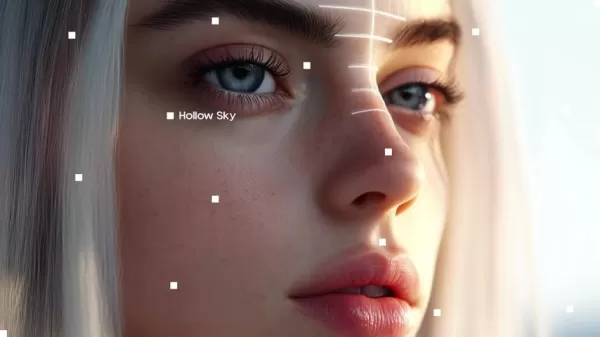 Diving Deep into Hollow Sky's Dreamy Soundscapes: An Exploration
Discovering the Essence of Hollow Sky: A Musical JourneyHollow Sky isn't just another name in the music scene; it's an immersive experience that captivates listeners. With its haunting melodies intertwined with deeply introspective lyrics, Hollow Sky crafts an environment where fans can truly lose t
Diving Deep into Hollow Sky's Dreamy Soundscapes: An Exploration
Discovering the Essence of Hollow Sky: A Musical JourneyHollow Sky isn't just another name in the music scene; it's an immersive experience that captivates listeners. With its haunting melodies intertwined with deeply introspective lyrics, Hollow Sky crafts an environment where fans can truly lose t



